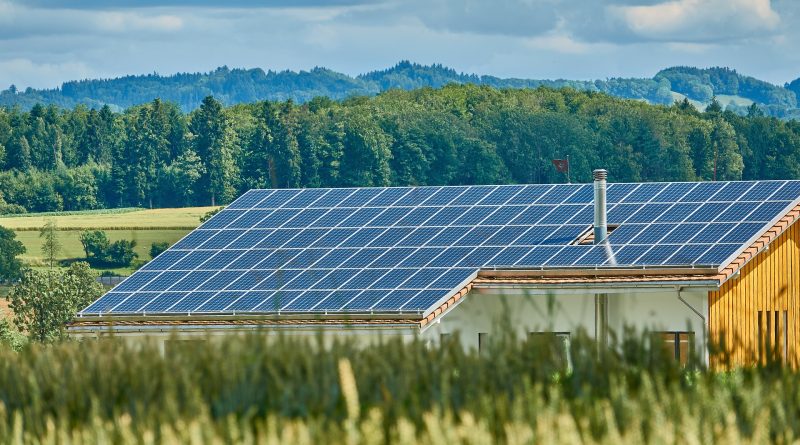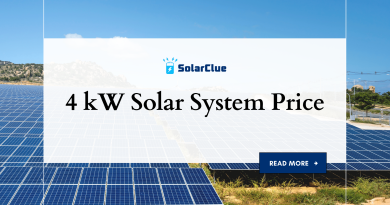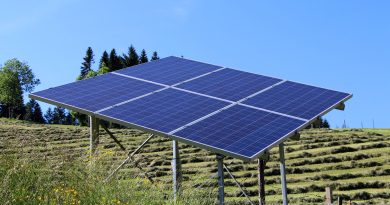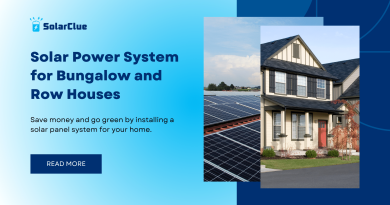On-Grid and Off-Grid Solar Systems: How They Work
Solar power has gained immense popularity as a sustainable and renewable source of energy. With the advancements in technology, two types of solar power systems have emerged – on-grid and off-grid systems. These systems harness the power of the sun and convert it into usable energy for homes and businesses. In this blog, we will discuss how these systems work, their benefits, and the key differences between them.
On-grid Solar Power Systems
On-grid solar power systems, also known as grid-tied systems, are connected to the local electrical grid. They work by converting sunlight into electricity using photovoltaic (PV) panels. The generated electricity is then fed into the grid, where it is used to power homes and businesses in the vicinity.
The main components of an on-grid solar power system include PV panels, inverters, a bi-directional meter, and the electrical grid. PV panels, made up of multiple solar cells, capture sunlight and convert it into direct current (DC) electricity. The inverters convert this DC electricity into alternating current (AC) electricity, which is the type used by most appliances and devices in homes and offices.
The bi-directional meter measures the electricity produced by the solar panels and the amount of electricity consumed from the electrical grid. When the solar panels generate excess electricity, it is fed into the grid, and the meter records the amount of electricity exported. Conversely, when the panels do not produce enough electricity, the grid provides the needed power, and the meter records the amount of electricity imported.
On-grid solar power systems have several advantages. Firstly, they allow homeowners and businesses to significantly reduce their electricity bills by harnessing the sun’s energy. Additionally, any surplus electricity generated can be sold back to the grid, enabling users to earn credits or even receive cash payments from the utility company. Moreover, on-grid systems require minimal maintenance, as the grid acts as a backup and ensures a continuous power supply.
Off-grid Solar Power Systems
In contrast to on-grid systems, off-grid solar power systems operate independently of the electrical grid. These systems are commonly used in remote areas, where connecting to the grid is not feasible or economical. Off-grid systems are also popular among sustainability enthusiasts who prefer complete energy independence.
The key components of an off-grid solar power system include PV panels, batteries, charge controllers, and inverters. PV panels capture sunlight and convert it into DC electricity, which is stored in batteries for later use. Charge controllers regulate the charging and discharging of the batteries to maximize their lifespan. Inverters, similar to those used in on-grid systems, convert DC electricity into AC electricity for use by household appliances and devices.
Off-grid systems face several challenges, mainly due to the absence of a backup grid. As a result, they typically require larger battery banks to store excess electricity generated during the day for use at night or during cloudy weather. It is crucial to carefully size the system to ensure uninterrupted power supply during periods of limited sunlight. Additionally, off-grid systems require regular maintenance of batteries and other components to ensure their efficient operation.
However, off-grid systems offer complete energy independence and can be a viable option for those seeking to live in remote locations or reduce their reliance on fossil fuels. They are also an excellent solution during power outages or natural disasters, ensuring that essential appliances and devices remain operational.
Differences between On-grid and Off-grid Solar Power Systems
While both on-grid and off-grid solar power systems function by harnessing solar energy, there are key differences between the two.
1. Connection to the Grid: On-grid systems are connected to the local electrical grid, allowing users to export excess electricity and import power when needed. Off-grid systems work independently of the grid and require battery storage for electricity during periods of low sunlight.
2. Cost: On-grid systems, without the need for batteries, tend to be more affordable than off-grid systems. Off-grid systems require additional investment in batteries, which can significantly increase the overall cost.
3. Reliability: On-grid systems offer a reliable power supply since the grid acts as a backup during cloudy weather or high energy demand. However, off-grid systems heavily rely on battery storage and require careful planning to ensure continuous power supply.
4. Energy Independence: Off-grid systems provide complete energy independence, allowing users to generate and consume their electricity without relying on utility companies. On-grid systems, while reducing reliance on the grid, are still connected to the electrical network.
Conclusion
Ready to make the switch to solar and experience the benefits firsthand? Explore the cutting-edge solutions offered by SolarClue® for on-grid and off-grid systems. Whether you’re looking to reduce electricity bills, earn credits, or achieve energy independence, SolarClue® has the perfect solar solution for you. Make an informed decision about your energy needs with SolarClue®, and join us in building a greener and more sustainable future. Contact SolarClue® now and take the first step towards a brighter tomorrow!
Frequently Asked Questions
The primary difference lies in their connection to the electrical grid. On-grid solar systems are connected to the local utility grid, while off-grid systems operate independently and are not connected to the grid.
On-grid solar systems generate electricity from sunlight using solar panels. The generated electricity is converted from DC to AC by an inverter and then used in the home or business. Any excess electricity is fed back into the grid, and the user may receive credits or compensation for it.
In most cases, on-grid systems shut down during a power outage to prevent sending electricity into the grid, which could pose a safety risk for utility workers. Users draw power from the grid during outages.
Off-grid solar systems operate independently of the grid. They use solar panels to generate electricity, which is stored in batteries for later use. Off-grid systems often include backup generators for extended periods without sunlight.
Yes, off-grid systems typically incorporate battery storage to store excess energy generated during sunny periods. Batteries ensure a continuous power supply during nights or cloudy days when solar generation is low.
While it’s technically possible, most off-grid systems are designed to operate autonomously. Connecting to the grid for backup defeats the purpose of having an off-grid system.
Off-grid systems are more common in remote or rural areas where grid connection is impractical or costly. In urban areas, on-grid systems are generally more feasible due to the availability of the electrical grid.
On-grid systems use a process called net metering, where excess electricity is fed back into the grid. Users receive credits or compensation for the surplus energy, which can offset their electricity bills.
On-grid systems are dependent on grid availability. If the grid goes down, the system shuts off for safety reasons. Additionally, changes in grid regulations or utility policies may impact the benefits of on-grid systems.
The cost-effectiveness depends on factors like location, grid availability, and individual energy needs. On-grid systems are often more cost-effective in urban areas, while off-grid systems make sense in remote locations with no grid access.




